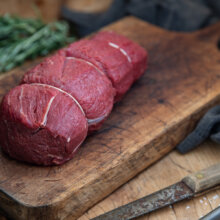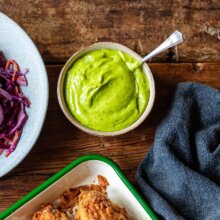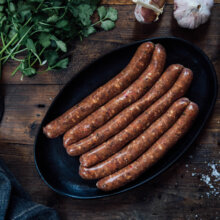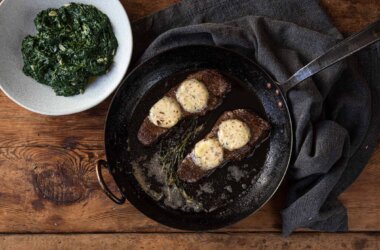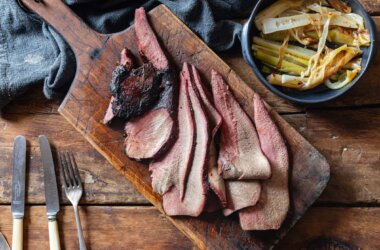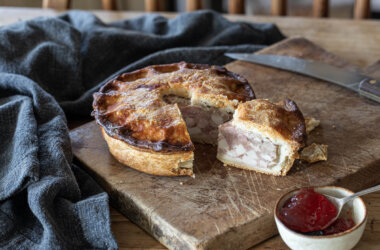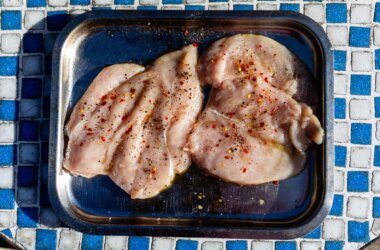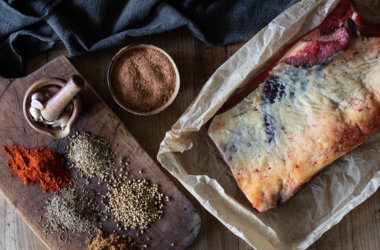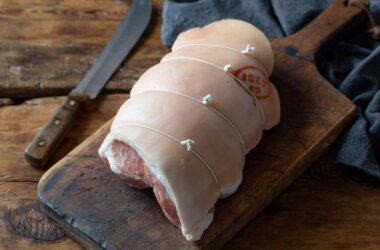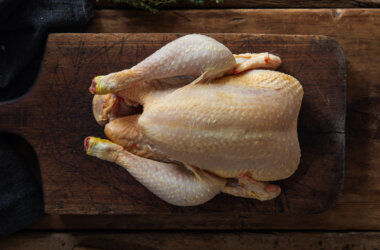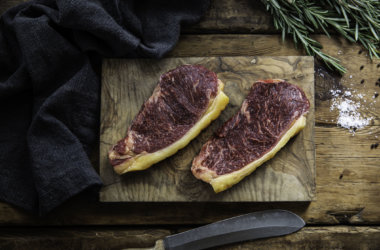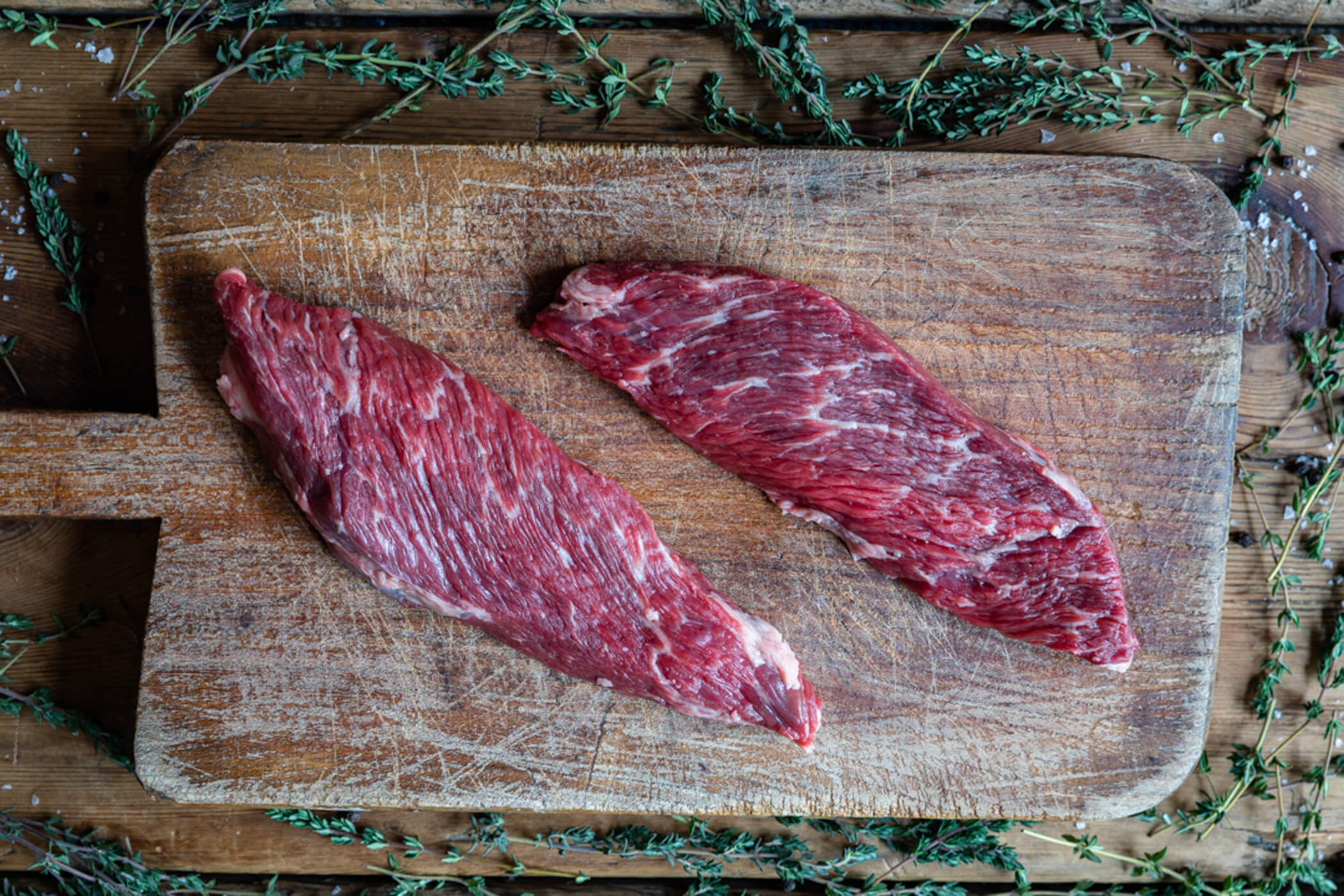
What Is Denver Steak?
How to Cook Denver Steak: Denver steak is cut from the cow’s front shoulder (the chuck), specifically from beneath the shoulder blade where the serratus ventralis muscle lies.
While the chuck typically sees a lot of movement, this particular muscle remains relatively tender. It takes a skilled butcher to separate it cleanly from the surrounding connective tissue, and slicing across the grain is key to maximising flavour and tenderness.
The result is one of the most tender cuts from the chuck – rich in deep beefy flavour and ideal for high-heat cooking. Equally impressive is its generous intramuscular marbling, which keeps the steak juicy as it cooks.
For more exceptional cuts like this, shop our whole carcass artisan steak collection.
Denver Steak Cooking Time
Thanks to its generous intramuscular marbling, Denver steak can be cooked to medium and still deliver great flavour. That said, we think medium-rare is the sweet spot – tender, juicy, and full of character. Aim for a total cooking time of around 6–8 minutes, depending on thickness.
How to Cook a Denver Steak to Perfection
- Take your Denver steaks out of the refrigerator, remove from the vacuum packaging, and pat dry with kitchen paper. Allow them to come up to room temperature.
- Heat a griddle or heavy-based frying pan until smoking hot.
- Just before cooking, rub olive oil over both sides of the steaks and season generously with salt and pepper.
- Place the steaks in the pan and brown on both sides—about 90 seconds per side. The steaks will naturally release from the pan once a crust has formed, so if they stick, wait a few moments and try again. You’re looking for a rich, golden crust.
- Reduce the heat and continue cooking for a total of 6–8 minutes, turning the steaks roughly every 90 seconds until they reach medium-rare (see top tips below).
- Remove from the pan and rest in a warm place for at least 5 minutes before serving.
Top Tips for Cooking Denver Steak
- To check the doneness of your Denver steak while cooking, the finger test is a quick and reliable guide – especially if you’re aiming for that ideal medium-rare finish.
- Lightly press the tip of your middle finger to the tip of your thumb, then feel the base of your thumb. That soft but slightly springy texture? That’s what a medium-rare steak should feel like. It should resemble the feel of your cheek – tender, yielding, but still with structure.
- Use this as a touch test during cooking to avoid overcooking and to help you consistently achieve perfectly cooked Denver steak every time.
Denver steak recipe
For a generous, full-flavoured take, try George Ryle’s Denver Steak with Braised Spinach and Bone Marrow Butter. The preparation takes time, but the result is well worth it – tender, richly marbled steak paired with slow-cooked greens and an indulgent butter that melts beautifully into the meat. A standout dish built on simplicity and depth.
